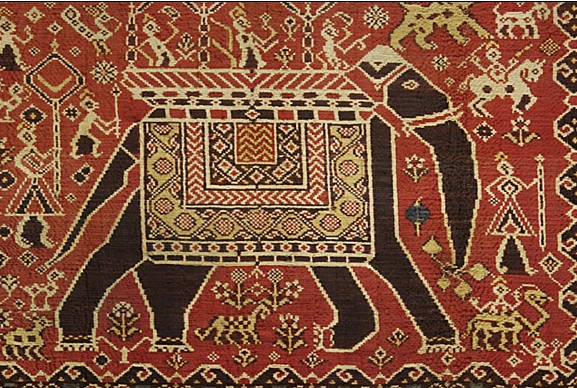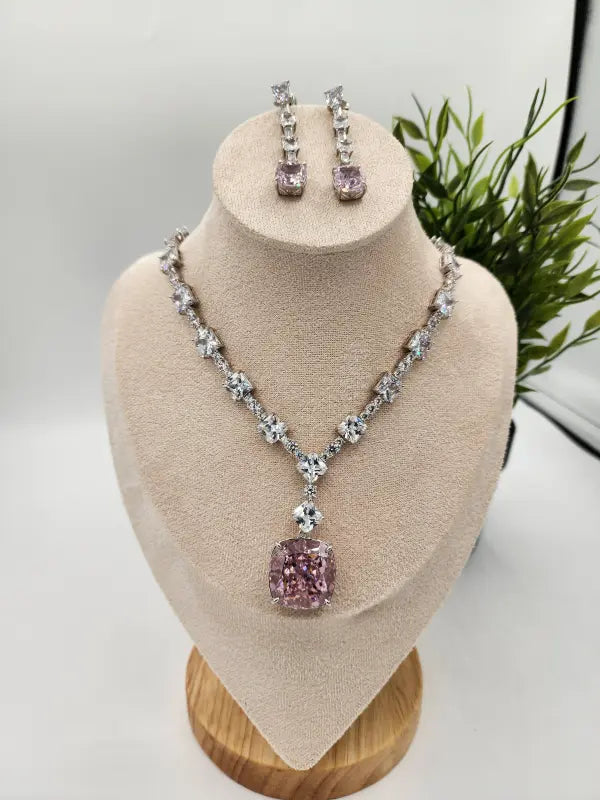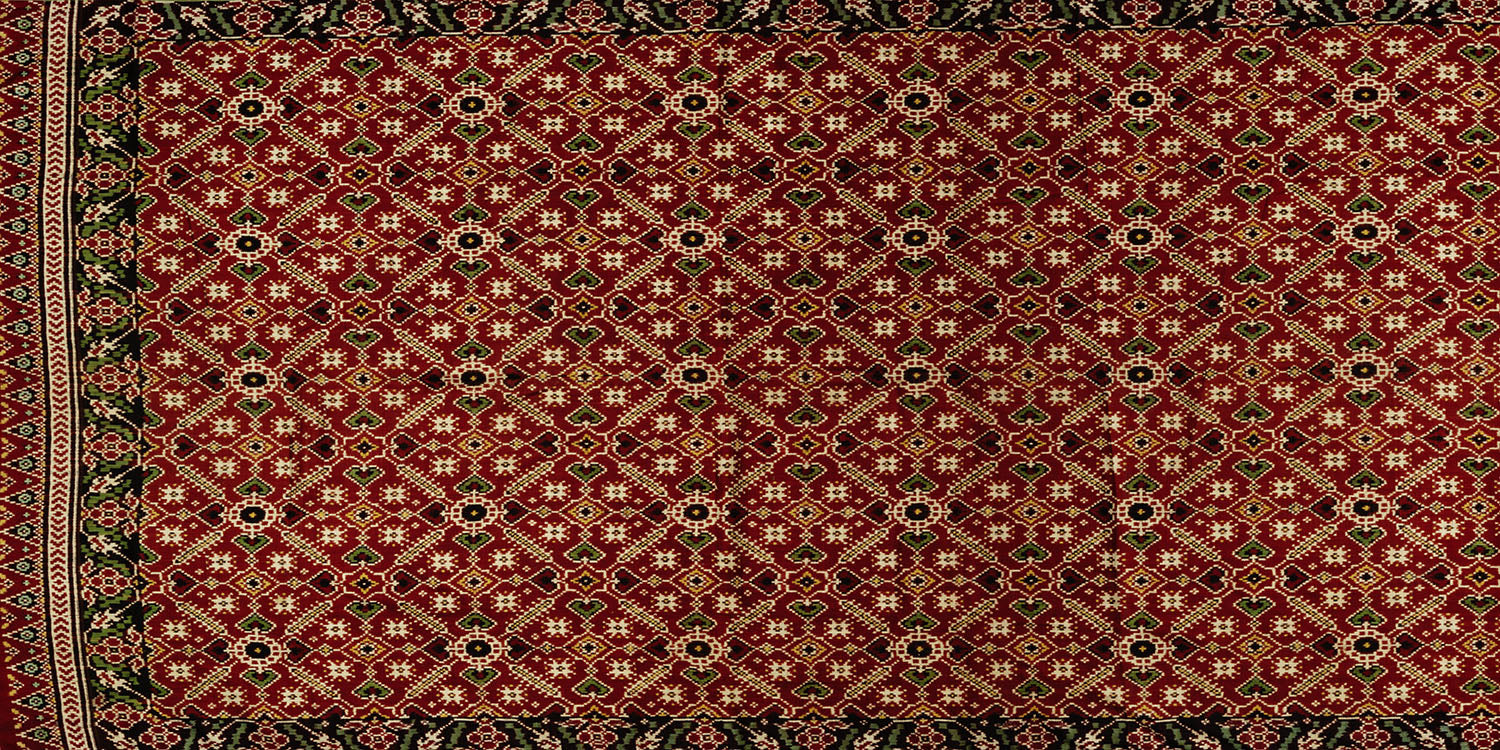Patola saris represent one of India's most exquisite and intricate textile traditions, originating from Patan, Gujarat. Known for their double ikat weaving technique, these saris are made primarily from silk and are celebrated for their vibrant colors, complex patterns, and durability. The word "patola" is a plural form, with the singular being "patolu." Historically, patola saris were symbols of luxury and status, once worn exclusively by royal and aristocratic families. Today, they remain coveted items, prized for their craftsmanship and cultural significance.
The Art of Double Ikat Weaving

The defining feature of Patola saris is the double ikat technique, a complex and labor-intensive process. In ikat weaving, the yarns are dyed before being woven into the fabric. What makes double ikat unique is that both the warp and weft threads are resist-dyed to match the desired pattern before weaving. This means the threads must be precisely aligned during the weaving process to achieve the intricate designs for which Patola saris are known.
The process begins with the selection of silk threads, which are then carefully divided into sections for dyeing. Each section is tied with a protective covering, typically made from cotton or plastic, before being dipped into different colored dyes. This process is repeated multiple times for each section, depending on the complexity of the pattern. The threads are then meticulously woven together on a handloom, where the dyed sections come together to form the final design.
The History and Cultural Significance

The history of Patola weaving dates back several centuries, with references to the craft appearing in ancient Indian scriptures and texts. The tradition is believed to have been introduced to Gujarat by the Salvi community, who migrated from Maharashtra and Karnataka around the 12th century. Patan, in particular, became a hub for Patola weaving, supported by the royal patrons of the time who valued the saris for their beauty and craftsmanship.
Patola saris were not only worn by the royalty of Gujarat but also held in high esteem across India and beyond. They were often given as gifts to kings and noblemen, symbolizing wealth, power, and prestige. The intricate patterns and vibrant colors of Patola saris also made them highly sought after in Southeast Asia, particularly in Indonesia, where they became an integral part of the local textile tradition.
The Patola of Patan: A Closely Guarded Family Tradition

The art of Patola weaving has always been a closely guarded family tradition, passed down through generations within a few select families in Patan. Today, only three families continue this ancient craft, preserving the techniques and secrets that have been kept within their lineage for centuries. The process of learning the craft is a rigorous one, often beginning at a young age. Traditionally, the skills are passed down from father to son, ensuring that the knowledge remains within the family.
Each family has its own unique patterns and techniques, making their Patola saris distinct. The process of creating a single Patola sari can take anywhere from six months to a year, depending on the complexity of the design. The time-intensive nature of the craft, combined with the skill required to execute the double ikat technique, contributes to the high cost of these saris. Despite the price, Patola saris remain in high demand among those who appreciate their artistry and cultural significance.
The Making of a Patola Sari
Creating a Patola sari is a meticulous and time-consuming process that involves several stages, each requiring a high level of skill and precision. The first step is the selection of high-quality silk threads, which are then washed and stretched to prepare them for dyeing. The threads are divided into sections based on the design, with each section being tied tightly with a protective covering.
The dyeing process is carried out in multiple stages, with each color being applied separately. The threads are repeatedly tied, dyed, and untied to create the intricate patterns. This process, known as resist dyeing, ensures that the colors are vibrant and do not bleed into each other. The accuracy of the dyeing is crucial, as any mistake can disrupt the alignment of the pattern during weaving.
Once the dyeing is complete, the threads are carefully aligned on a loom, with the warp and weft threads being woven together to create the final fabric. The weaver must pay close attention to the alignment of the threads to ensure that the pattern comes out correctly. The weaving process itself can take several months, depending on the complexity of the design and the skill of the weaver.
Variations and Styles

While the traditional Patola sari is made using silk, there are also variations that incorporate different materials and techniques. One such variation is the velvet Patola, which is made in Surat. These saris have a rich, plush texture and are known for their luxurious feel. The designs on velvet Patolas are usually larger and more bold, making them popular among those looking for a statement piece.
Another variation is the Rajkot Patola, which is a single ikat version of the sari. In Rajkot Patola, only the weft threads are dyed using the ikat technique, while the warp threads remain solid in color. This variation is less time-consuming to produce and, therefore, more affordable, making it accessible to a wider audience.
Conclusion
Patola saris are more than just garments; they are works of art that represent the rich cultural heritage of Gujarat. The double ikat weaving technique, combined with the vibrant colors and intricate designs, makes these saris truly unique. Despite the challenges faced by the craft, Patola saris continue to be highly valued for their beauty, craftsmanship, and cultural significance. As efforts to preserve and promote Patola weaving continue, there is hope that this ancient tradition will endure for generations to come, allowing more people to appreciate the timeless elegance of Patola saris.
FAQs about Patola Saris
- What makes Patola saris unique? Patola saris are unique due to their double ikat weaving technique, where both the warp and weft threads are dyed before weaving. This results in intricate, symmetrical patterns and vibrant colors that are highly valued.
- Why are Patola saris so expensive? The high cost of Patola saris is due to the labor-intensive process and the time required to create them. It can take six months to a year to weave a single sari, making them exclusive and expensive.
- Where are Patola saris made? Patola saris are traditionally made in Patan, Gujarat, India. However, variations like velvet Patola are also made in Surat.
- Who traditionally wears Patola saris? Historically, Patola saris were worn by royal and aristocratic families. Today, they are popular among those who appreciate their cultural significance and can afford their high prices.
- Is the art of Patola weaving still alive? Yes, the art of Patola weaving is still alive, but it is practiced by only a few families in Patan. Efforts are being made to preserve this craft and pass it down to future generations.




